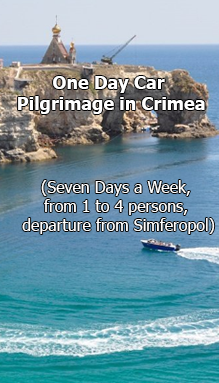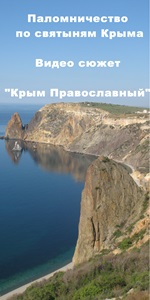Bakla ("Bean")
 The medieval settlement of Bakla ("Bean") is located near the village of Skalistoe. The history of this cave town began in the middle of the third century AD. The Byzantine Empire strengthened its position in the Central Crimea and began construction of a series of fortifications that were supposed to stop or complicate the invasion of nomadic tribes. In the 5-6 century a small guard post Bakla turns into a fortified fortress. The town began to develop. By the 7-8 century, it had about a hundred houses. The main part of the houses was cut down in the rocks. There were also cave temples there. Residents engaged in agriculture and viticulture. The main development of the town was in the 10-12 century. That time is considered to be the heyday of Bakla which was interrupted by the invasion of Nogay in 1299. Bakla was looted and destroyed under the onslaught of nomadic tribes. After the invasion of Nogay the history of the town has not been known.
The medieval settlement of Bakla ("Bean") is located near the village of Skalistoe. The history of this cave town began in the middle of the third century AD. The Byzantine Empire strengthened its position in the Central Crimea and began construction of a series of fortifications that were supposed to stop or complicate the invasion of nomadic tribes. In the 5-6 century a small guard post Bakla turns into a fortified fortress. The town began to develop. By the 7-8 century, it had about a hundred houses. The main part of the houses was cut down in the rocks. There were also cave temples there. Residents engaged in agriculture and viticulture. The main development of the town was in the 10-12 century. That time is considered to be the heyday of Bakla which was interrupted by the invasion of Nogay in 1299. Bakla was looted and destroyed under the onslaught of nomadic tribes. After the invasion of Nogay the history of the town has not been known.
Kachi-Kalyon ("Cross Ship")
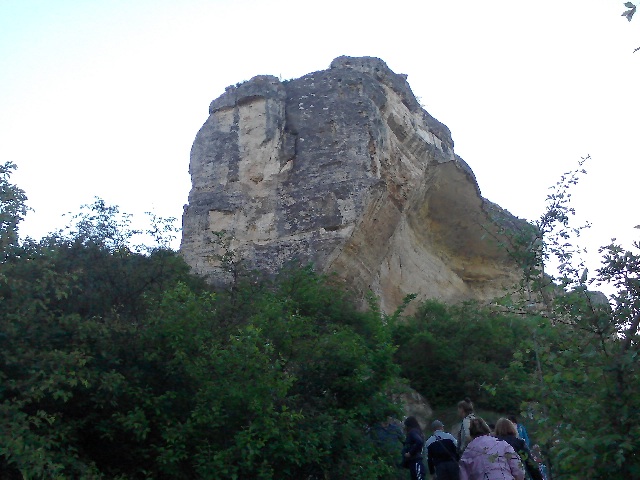 Kachi-Kalyon is situated in the valley of Kacha river between the villages of Predushchelnoye and Bashtanovka. It appeared on the crossroads of trading ways and was known for its wine-presses. There were about 120 of them. More than 250 tons of grapes could be processed in them simultaneously. Pottery-making was highly developed too.
Kachi-Kalyon is situated in the valley of Kacha river between the villages of Predushchelnoye and Bashtanovka. It appeared on the crossroads of trading ways and was known for its wine-presses. There were about 120 of them. More than 250 tons of grapes could be processed in them simultaneously. Pottery-making was highly developed too.
In the VIII -IX cc. a monastery sprang up there. The remains of it can be seen now. In 1778 the monastery ceased its functioning. In 1850’s St. Anastasia monastery appeared and existed up to 1921. The place is known for its spring with fresh sweet water. Opposite Kachi-Kalyon on the hill covered with forests a big graveyard is spread out. Probably, potters and smiths, cattle-breeders and carriers were buried there. From the side, this mountain resembles a large ship in the shape of a cross.
Kyz-Kermen ("Fortress of virgin")
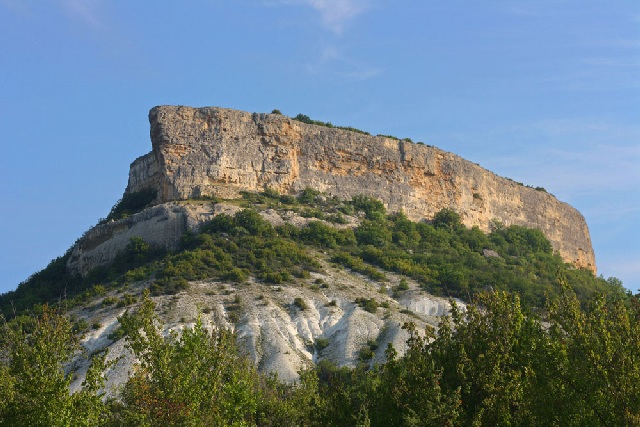 Kyz-Kermen ("Fortress of virgin") is located in the valley of Kacha river, close to Tepe-Kermen. This mount is little studied. It is known that Kyz-Kermen’s people made wine of grapes. Their settlement had a market place where the craftsmen used to sell their production. The plateau still keeps the remains of defensive walls, towers, and residential houses. Their dwellings were made of stone and clay with tiled roofs.
Kyz-Kermen ("Fortress of virgin") is located in the valley of Kacha river, close to Tepe-Kermen. This mount is little studied. It is known that Kyz-Kermen’s people made wine of grapes. Their settlement had a market place where the craftsmen used to sell their production. The plateau still keeps the remains of defensive walls, towers, and residential houses. Their dwellings were made of stone and clay with tiled roofs.Tepe-Kermen ("Fortress on a Summit")
 Medieval fortress of Tepe-Kermen ("Fortress on a Summit") is located in the vicinity of the present city of Bakhchisaray, at the top of a mountain which raises on 540 m above the sea level. On its south and west, there are precipices up to 12 m high.
Medieval fortress of Tepe-Kermen ("Fortress on a Summit") is located in the vicinity of the present city of Bakhchisaray, at the top of a mountain which raises on 540 m above the sea level. On its south and west, there are precipices up to 12 m high.
Mangup
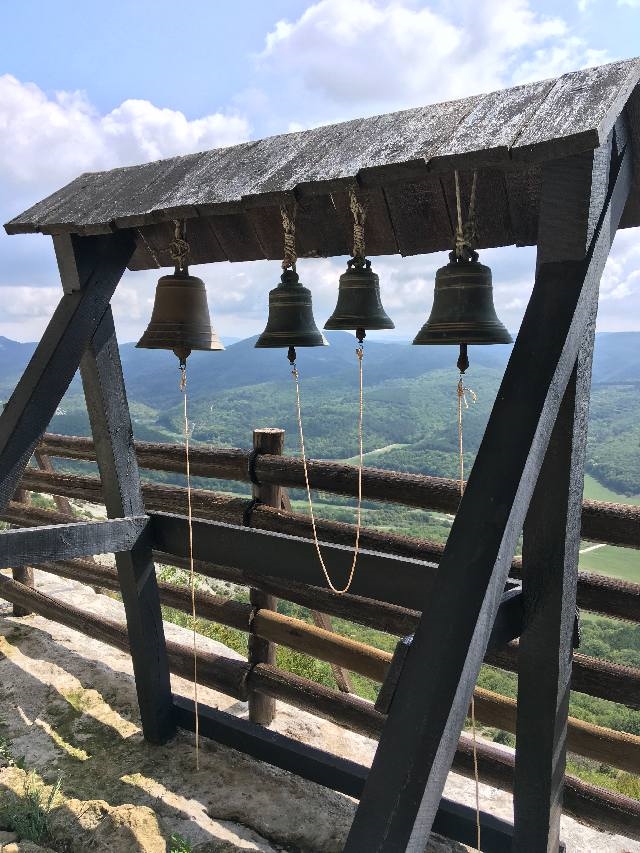 Mangup also known as Mangup Kale (kale means "fortress" in Turkish) is a historic fortress, located on a plateau about 9 miles due east of Sevastopol.
Mangup also known as Mangup Kale (kale means "fortress" in Turkish) is a historic fortress, located on a plateau about 9 miles due east of Sevastopol.
In early medieval times it was known as Doros (Greek: Δόρος) or Dory (Greek: Δόρυ) by the Byzantines, later it was given the Kipchak name Mangup.
Страница 1 из 2 (следующая)









